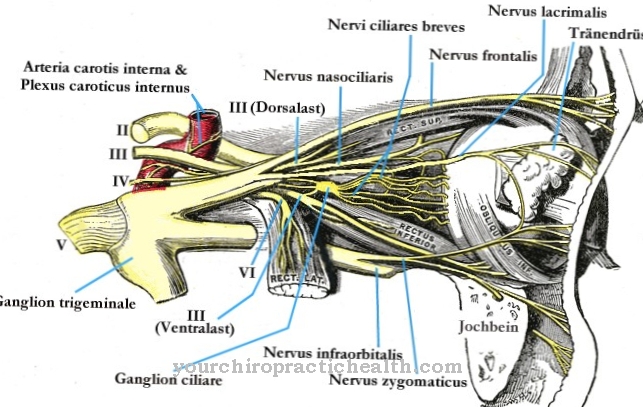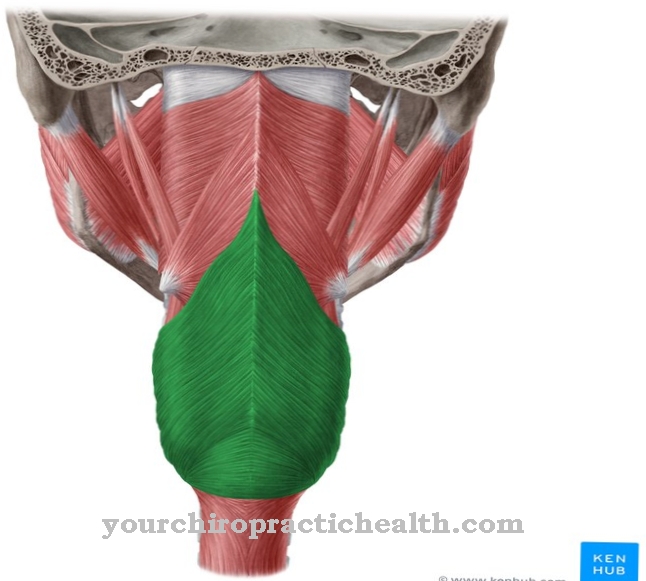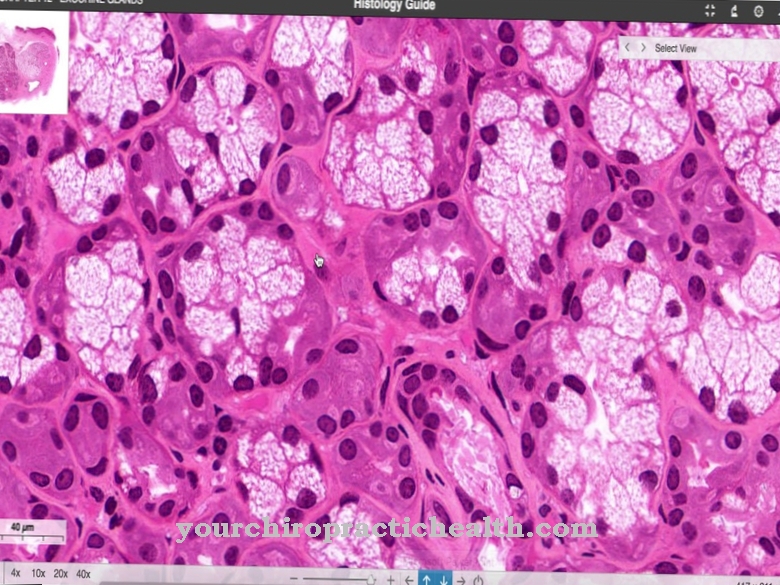The first section of the lower airway is the windpipe the air-conducting connection between the larynx and the bronchi. The air reaches the lungs through the windpipe. If food gets into the air instead of the esophagus as a result of too hasty ingestion of food, this causes a strong urge to cough which is associated with cramping of the trachea muscles and is probably known to most people.
What is the windpipe?
The windpipe connects to the larynx and ends at the level of the breastbone, so it extends from the neck to the chest.
Typically the trachea is between 10 and 15 cm long and about 15 to 25 mm in diameter. The elastic wall of the windpipe, also called the trachea, is made up of connective tissue and layers of smooth muscle.
Cartilage braces in the anterior wall ensure the stability and strength of the trachea.
Anatomy & structure
The muscular tube of the windpipe divides into the right and left main bronchus at the level of the 4-5 thoracic vertebrae, at the upper end it connects to the cricoid cartilage of the larynx.
At the branch, the tracheal fork, there is a spur, the so-called carina trachea, which is important in dividing the air between the right and left main bronchus. The trachea lies in front of the esophagus and behind the thyroid gland. It owes its strength to the 16-20 cartilage clips in the front wall, which are connected to one another by ring ligaments.
The elastic tissue between the cartilage braces is important so that the trachea tube can stretch and move when you swallow or move your head. While the cartilage clasps with ligaments are on the front, smooth muscles and connective tissue are on the back.
The windpipe can be narrowed by up to 25% of its original diameter through the muscles of the windpipe. The inner wall of the windpipe is lined with a ciliated epithelium. Through the ciliated epithelium and the mucus produced by the goblet cells, foreign bodies such as dust can be transported out of the windpipe and coughed up or swallowed.
Functions & tasks
The main function of the windpipe consists of gas transport, i.e. the conduction of air from the throat area to the lungs. In addition, the air in the windpipe is warmed up, moistened and foreign bodies removed with the help of the ciliated epithelium.
The inner wall of the windpipe is densely covered with cilia and goblet cells, which secrete mucus. The cilia move the dust particles and other foreign bodies bound in the mucus towards the throat. If an inhaled foreign body is too large to be transported out of the windpipe in this way, a strong cough reflex sets in. This causes the foreign body to cough up.
The cartilage braces, which enclose the front of the windpipe, have a stabilizing function. When inhaling, a negative pressure arises which would collapse the elastic windpipe without stabilizing elements. The cartilage braces ensure that you can inhale without the trachea closing or collapsing due to the negative pressure.
The elasticity of the windpipe is particularly important. During the swallowing process, the larynx moves regularly upwards and the windpipe must be able to follow this movement without any problems. If the cough reflex sets in, the windpipe is required to be even more elastic, because it also has to stretch lengthways. The inside of the windpipe is a mucous membrane under which there are trachea glands for additional moistening, which, like the goblet cells, also form mucus.
Diseases
There can be a variety of problems related to the windpipe occur. Aspiration of a foreign body is particularly common, which causes a strong urge to cough. If an inhaled foreign body cannot be coughed up, there is a risk of suffocation and emergency measures such as a trachea incision are necessary.
The most common disease related to the windpipe is called trancheitis, an inflammation of the windpipe. This can be caused by an infection with bacteria or viruses but it can also occur due to an allergy and leads to pain when swallowing and coughing with sputum. With tracheal stenosis, the windpipe is narrowed, which can lead to shortness of breath and can be determined by changes in breathing sounds such as whistling or humming.
Injuries to the windpipe from accidents often require surgical treatment. In tracheomalacia, the windpipe collapses when you breathe in because the cartilage braces do not adequately support the trachea. Symptoms of tracheomalacia include difficulty breathing, hoarseness, and abnormal breath sounds.
You can find your medication here
➔ Medicines against coughs and coldsTypical & common diseases
- Inflammation of the trachea
- difficulties swallowing
- Tracheal stenosis












.jpg)



.jpg)










.jpg)
